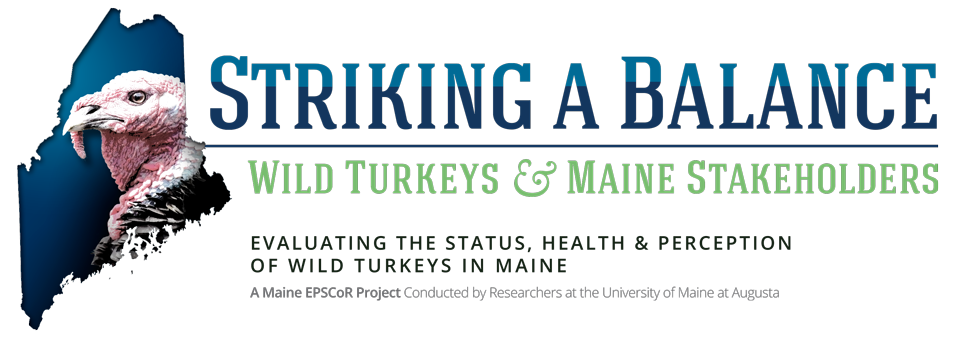Analysis
A satellite receiver was attached to the female turkey in March 2012. As a turkey’s habitat is normally in wooded areas, there was a realistic expectation that the positional accuracy, would be somewhat degraded. We received 114 positions complete with latitude, longitude, time stamp, altitude (elevation) and a location class which describes the positional accuracy, from March through early September. Of Those 114, only 44 (~39%) were of class 3, with a reported accuracy no larger than 250 meters. Of these 44 values, they were then segmented into morning and evening and monthly data sets. 24 occurred with a time stamp of 6pm-6am, and 20 from 6am-6pm. From a statistical analysis, there was little discrepancy between elevations or positions of the morning and evening datasets in mean values, although the morning dataset had a standard deviation of about double than that of the evening dataset.
Land Classification Analysis
Outside of the first month (March), most of the other month tracks appear to be concentrated in the same area, (see Figure 1). Analysis was therefore split into 2 study areas. Land classification from 2011 was available from the Maine State GIS agency. Comparison between the two study areas appeared similar (see Figure 2 and Table 1 below).
|
Table 1. Percentage of Land Classification in 2 Study Areas |
||
|
Land Classification |
March |
April Through September |
|
Corn |
1.69 |
0.00 |
|
Alfalfa |
0.36 |
0.00 |
|
Other Hay/Non Alfalfa |
33.63 |
44.15 |
|
Pasture/Grass |
2.76 |
0.81 |
|
Open Water |
0.00 |
0.20 |
|
Developed/Open Space |
2.58 |
1.81 |
|
Developed/Low Intensity |
4.00 |
1.21 |
|
Developed/Med Intensity |
0.09 |
0.00 |
|
Deciduous Forest |
3.47 |
3.43 |
|
Evergreen Forest |
18.95 |
14.31 |
|
Mixed Forest |
27.05 |
30.44 |
|
Shrubland |
0.89 |
0.20 |
|
Woody Wetlands |
3.38 |
3.43 |
|
Herbaceous Wetlands |
1.16 |
0.00 |
Comments
Although there appears to be definite territory, there did not emerge any true “tracks” or circuits that the turkey would normally follow. Also most information about turkeys sleeping in trees was not statistically supported by the data. Elevation data is normally very suspect, so further analysis should be conducted. Also, there is some question to the calibration of this particular receiver, we look forward to a second tagging and subsequent analysis.
